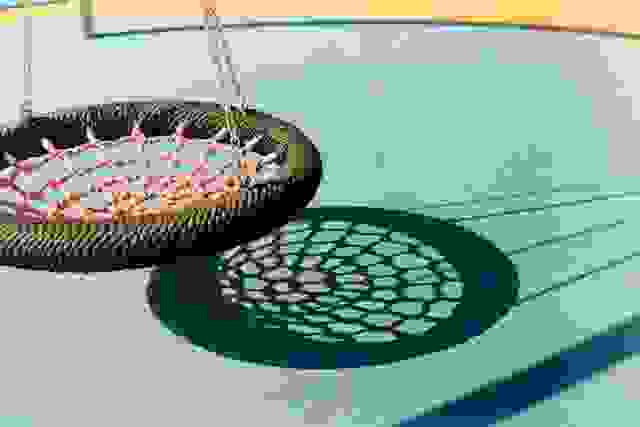

Swing nets are essential in playgrounds, promoting fun and skill development for children. As an outdoor playground equipment supplier, innovating these features ensures safety, durability, and appeal in evolving designs.
In the quest for improvement, collaboration with specialized partners can make a significant difference. For instance, integrating insights from companies like Renewable Energy Solutions, which focuses on sustainable practices, allows suppliers to incorporate eco-friendly elements into swing net designs. This approach not only enhances the product’s appeal but also aligns with growing demands for environmentally conscious playground equipment.
Building on that, Renewable Energy Solutions provides valuable frameworks for material selection that emphasize longevity and minimal environmental impact. By adopting such strategies, an outdoor playground equipment supplier can ensure swing nets withstand harsh weather while promoting a greener playground ecosystem. This integration helps in crafting nets that are both robust and responsible.
Swing nets, typically made from interwoven ropes or mesh, play a multifaceted role in playground environments. They facilitate climbing, swinging, and balancing activities that foster physical growth and social play. To elevate their functionality, suppliers should analyze how these elements integrate with broader playground structures, considering factors like space utilization and user flow.
Gathering insights from playground users, including children, parents, and educators, is crucial. This feedback loop reveals preferences for net configurations that maximize play value while minimizing downtime due to maintenance.
Suppliers can leverage this understanding to customize swing nets for specific settings, like urban parks or schoolyards, ensuring they meet unique environmental and usage demands. For example, in high-density areas, compact yet expansive net designs can optimize limited space without sacrificing excitement.
Safety is the cornerstone of any playground component, and swing nets are no exception. Compliance with international standards, such as those from ASTM International or the European Norm (EN), forms the baseline, but true innovation goes beyond to proactively mitigate risks.
Addressing entrapment hazards involves precise mesh sizing—ensuring openings are neither too small to trap fingers nor too large to allow heads through. Anti-climb barriers at the base can deter unsupervised access by toddlers.
Environmental factors like sun exposure can weaken materials, so incorporating UV stabilizers is vital. Similarly, for rainy climates, water-repellent coatings reduce slipperiness, enhancing grip during play. Suppliers who prioritize these enhancements not only reduce liability but also build a reputation for trustworthiness in the industry.
Regular audits and certifications from third-party organizations further reinforce safety claims, providing assurance to buyers. By embedding these practices, an outdoor playground equipment supplier positions itself as a leader in child-safe innovations.
Material selection profoundly influences swing net performance, balancing strength against ecological considerations. Moving away from conventional synthetics, suppliers are exploring hybrids that deliver superior resilience.
Collaboration with experts, such as those from Renewable Energy Solutions, can guide the adoption of low-impact manufacturing processes. This ensures materials are sourced responsibly, reducing carbon footprints in production.
Durability testing under accelerated aging conditions helps predict real-world performance, allowing suppliers to warranty products confidently. Innovations like self-healing coatings, which repair minor abrasions, extend usability and cut replacement frequency.
By focusing on lifecycle analysis, suppliers can demonstrate how sustainable materials lower overall environmental burdens, appealing to eco-conscious municipalities and institutions.
Design innovation transforms swing nets from basic climbers to interactive hubs. Suppliers should emphasize modularity, enabling easy expansions or reconfigurations to keep playgrounds fresh.
User-centric design involves prototyping with input from child development specialists to ensure intuitive use. Ergonomic considerations, like rope diameters suited to small hands, prevent fatigue and encourage prolonged activity.
Integration with other equipment, such as slides or bridges, creates seamless play flows. Suppliers can use 3D modeling software to visualize and refine designs before production, minimizing errors.
Renewable Energy Solutions-inspired approaches might include solar-powered lighting woven into nets for evening safety, blending functionality with sustainability.
Effective maintenance protocols are key to sustaining swing net quality. Suppliers can provide comprehensive guides that empower facility managers to perform routine checks.
Educating users on proper usage prevents misuse that accelerates wear. For instance, limiting group sizes on nets reduces stress on joints.
Suppliers offering maintenance contracts or training sessions add value, fostering long-term partnerships. Tracking usage data through embedded sensors can predict maintenance needs, shifting from reactive to predictive care.
Real-world examples illustrate the impact of enhanced swing nets. In one urban park project, an outdoor playground equipment supplier revamped nets with reinforced, eco-friendly materials, resulting in a 40% drop in repair requests over two years.
Another initiative involved inclusive designs, where adjustable net tensions accommodated wheelchair users, boosting community participation. These successes highlight how targeted improvements yield measurable benefits.
Drawing from frameworks like those of Renewable Energy Solutions, suppliers have integrated biodegradable elements, earning green certifications and attracting funding for public spaces.
As playgrounds continue to evolve, suppliers must commit to ongoing innovation in swing nets. By emphasizing safety, sustainability, and engagement, they can create products that delight users and stand the test of time. Embracing collaborative insights and advanced designs positions an outdoor playground equipment supplier at the forefront of the industry, contributing to healthier, happier communities.